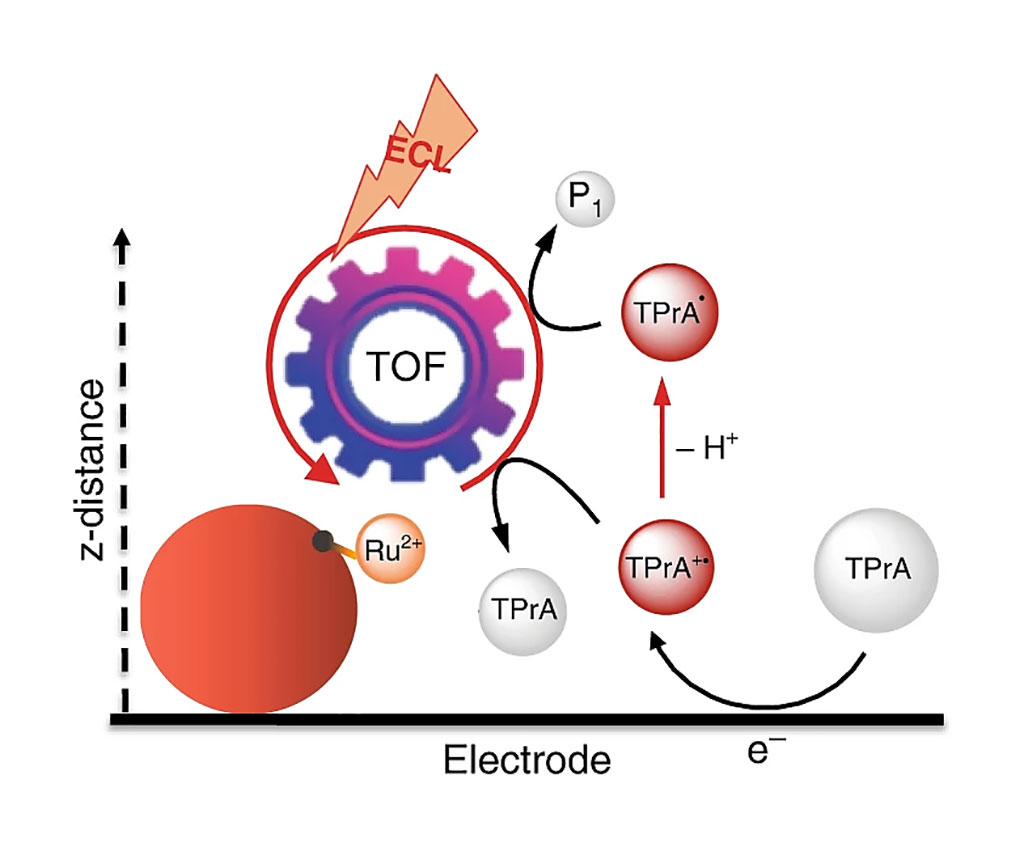Increasingly Efficient Serological Tests Developed with Electrochemiluminescence
By LabMedica International staff writers
Posted on 17 Jun 2020
Diagnostic markers, or biomarkers, are biomolecules (e.g., enzymes, proteins, peptides, and hormones) that can be measured accurately and reproducibly and can precisely predict relevant clinical outcomes or diseases in various populations. Posted on 17 Jun 2020
In fact, biomarkers represent a powerful aid in clinical diagnostic and therapeutic monitoring. Therefore, detection, identification, and quantification of such molecules can translate into the development of sophisticated methods and instrumentations for analyzing clinically useful biomarkers.

Image: Schematic representation of the remote electrochemiluminescence (ECL) mechanism (Photo courtesy of University of Bologna).
Medical Chemists at the University of Bologna (Bologna, Italy) and their colleagues discovered an unexpected but highly efficient mechanistic path for electrochemiluminescence (ECL) generation close to the electrode surface (signal enhancement, 128%) using an innovative combination of ECL imaging techniques and electrochemical mapping of radical generation.
The team used through the combination of ECL and microscopy and the use of labeled microbeads, they mapped ECL generation close to the electrode surface (≤1 µm), thus revealing the contribution of an additional pathway to ECL generation, which was unobserved to date. This additional mechanism exhibits a very high efficiency, i.e., 10 times more intense than the signals measured at larger distances (>1 µm).
The scientists identified a family of alternative coreactants/additives, namely branched amines, which may lead to an advantageous overall signal enhancement. In particular, the use of N-dipropyl isobutyl amine (DPIBA) enhances the ECL signal by a maximum of 47% in a commercial immunoassay system for the quantification of several biomarkers, such as thyroid stimulating hormone (TSH), cardiac troponin T, ferritin, and immunoglobulin (Ig)M antibodies against Toxoplasma gondii (Toxo IgM) and hepatitis A (A‐HAV IgM). A series of commercially available Elecsys assays (Roche Diagnostics, Indianapolis, IN) for the detection of those specific biomarkers was used on a Roche cobas e 801 immunoassay analyzer to evaluate the effect of DPIBA on the assay performance.
Alessandra Zanut, PhD, a Physical Chemist and first author of the study, said, “From these results, we managed to identify highly efficient reactants that are able to enhance the sensitivity of this technique way beyond that currently employed for serological tests. With this technique, we obtained an ECL signal enhancement up to 128% compared to current techniques.” The study was published on May 29, 2020 in the journal Nature Communications.








 (3) (1).png)




